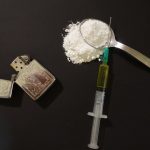Fractures typically mended with metal plates and screws could be replaced with 3D printed ceramic implants in the future. This means that treating severely broken bones could become less painful and more “natural”. The best feature of the new technology is that the implant gradually disappears and transforms into actual bone.
Broken bones, with about 6.8 million cases per year in the US, are among the most common orthopedic problems. After the severe bone break, most people depend on medical devices like pins and screws to hold the pieces together while the bone heals. Unfortunately, this process is painful and difficult. In many situations, the metal has to be taken out after a while. Hopefully, this and similar procedures like bone grafting, e.g. iliac crest harvest, will become history.
New approaches are in the development: stem cell treatments, in vivo bioreactors for bone regeneration and 3D-printed ceramic implants. These new and more effective technological marvels might make older ones obsolete. A potentially game-changing new tool is definitely the ceramic implant, that holds fractured bones together while transforming into natural bone.
The material was created by Hala Zreiqat at the University of Sydney in Australia and her colleagues. The implant was tested and has successfully repaired broken arm bones in rabbits. The new study, in which Zreiqat’s group tested this ability, with large leg fractures in sheep, will be published soon. The experiment was successful in all eight animals involved in the study. Although this is a small sample, the researchers are encouraged with good results.
The sheep were able to walk immediately after surgery in which the implant was placed. They were walking with plaster casts for four weeks to improve stabilization throughout the healing process. Three months after the operation, the researchers observed complete healing in 25% of the fractures. After one year, 88% of the fractures healed completely. The best feature of this methodology is gradually dissolving scaffolds of the initial implant. In short, the implant allows natural bone tissue to be created in places where it’s missing while the material dissolves when it is no longer needed.
Zreiqat commented on the success of this study, referring to the sheep. “They got their old bones back”, Professor said for the New Scientist.
Since the implant has a similar composition to natural bone, researchers concluded that it can dissolve without toxic side effects. The implant is made up of calcium silicate, the mineral gahnite and small amounts of strontium and zinc which are trace elements in the natural bone. It also acts as a natural bone through which blood vessels can grow due to its porous structure. For these reasons, it is a perfect tool for bone restoration.
Another advantage is that sheep in the study were observed to be extremely tolerant to the implants. Other methods that use bone grafts can be rejected by a patient’s immune system. New implants also have their handicap, rigidity, but there is no doubt that 3D printed implants will improve the lives of patients.
Researchers from Northwestern University in Illinois are not far from developing their version of 3D printed bone implant:
Learn more about the process of bone fracture healing in the video below:
By Andreja Gregoric, MSc




Very interested in having this done for my ankle replacement.
Very interesting concept. I would like to learn more about it.
H. Hoben